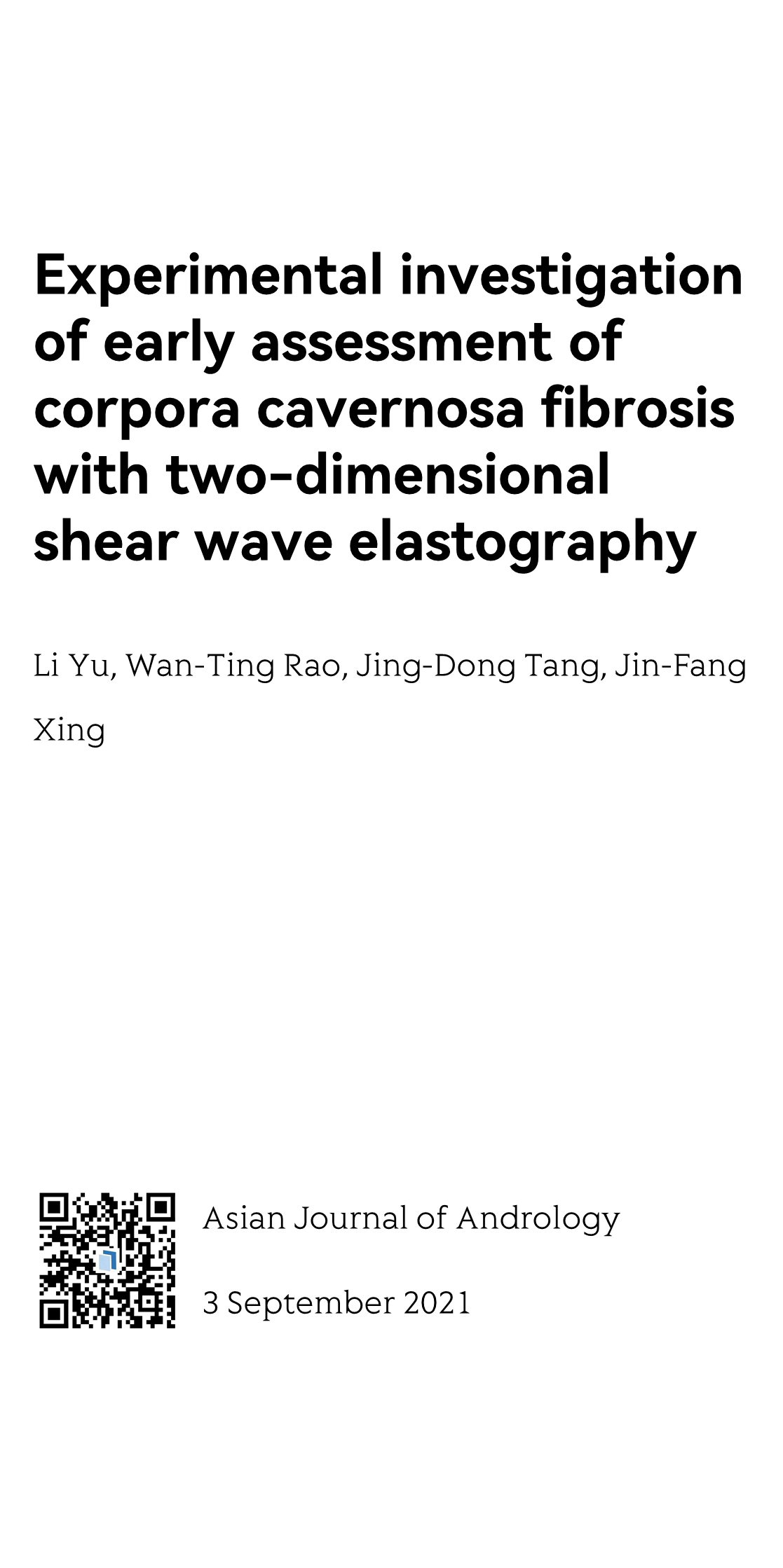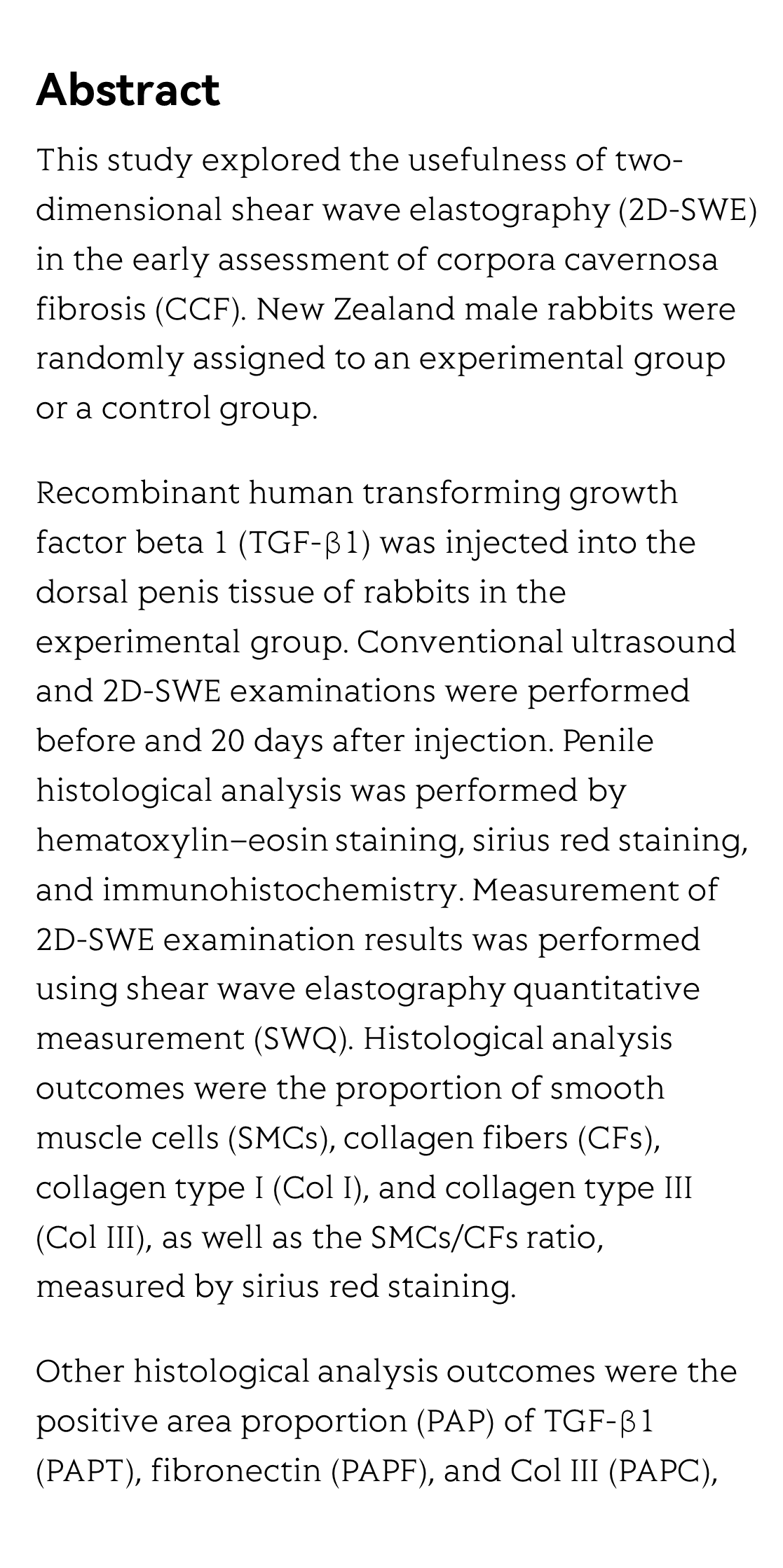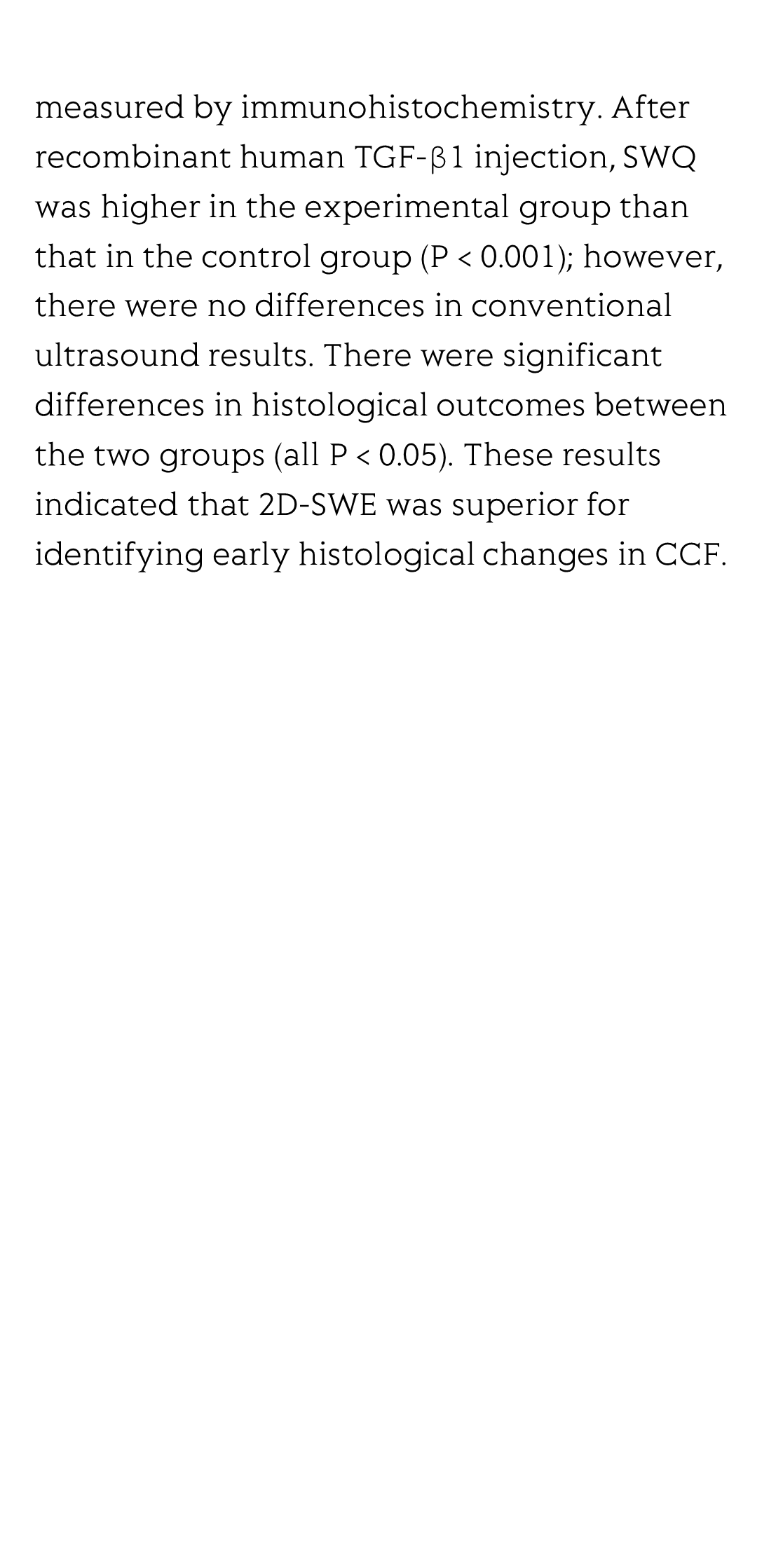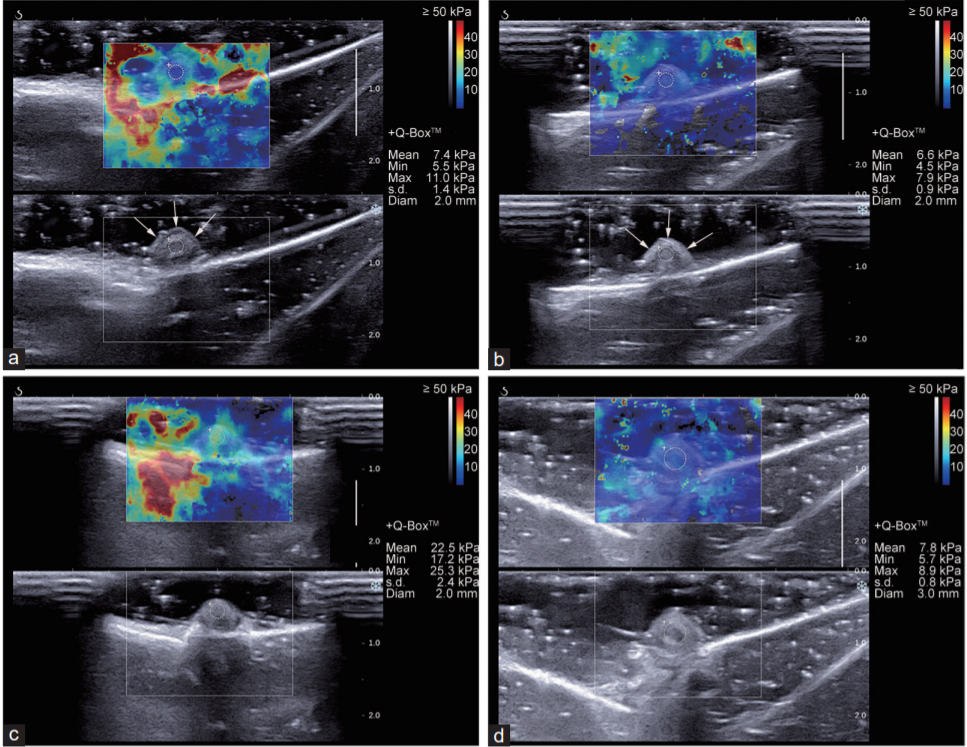(Peer-Reviewed) Experimental investigation of early assessment of corpora cavernosa fibrosis with two-dimensional shear wave elastography
Li Yu ¹, Wan-Ting Rao ², Jing-Dong Tang 汤敬东 ³, Jin-Fang Xing 邢晋放 ² ³
¹ Department of Special Inspection, Shanghai Shibei Hospital of Jing'an District, Shanghai 200435, China
中国 上海 上海市静安区市北医院特检科
² Department of Medical Ultrasound, Fudan University Pudong Medical Center, Shanghai 201399, China
中国 上海 复旦大学附属浦东医院超声医学科
³ Shanghai Key Laboratory of Vascular Lesions Regulation and Remodeling, Fudan University Pudong Medical Center, Shanghai 201399, China
中国 上海 复旦大学附属浦东医院 上海市血管病变调控与重塑重点实验室
Asian Journal of Andrology, 2021-09-03
Abstract
This study explored the usefulness of two-dimensional shear wave elastography (2D-SWE) in the early assessment of corpora cavernosa fibrosis (CCF). New Zealand male rabbits were randomly assigned to an experimental group or a control group.
Recombinant human transforming growth factor beta 1 (TGF-β1) was injected into the dorsal penis tissue of rabbits in the experimental group. Conventional ultrasound and 2D-SWE examinations were performed before and 20 days after injection. Penile histological analysis was performed by hematoxylin–eosin staining, sirius red staining, and immunohistochemistry. Measurement of 2D-SWE examination results was performed using shear wave elastography quantitative measurement (SWQ). Histological analysis outcomes were the proportion of smooth muscle cells (SMCs), collagen fibers (CFs), collagen type I (Col I), and collagen type III (Col III), as well as the SMCs/CFs ratio, measured by sirius red staining.
Other histological analysis outcomes were the positive area proportion (PAP) of TGF-β1 (PAPT), fibronectin (PAPF), and Col III (PAPC), measured by immunohistochemistry. After recombinant human TGF-β1 injection, SWQ was higher in the experimental group than that in the control group (P < 0.001); however, there were no differences in conventional ultrasound results. There were significant differences in histological outcomes between the two groups (all P < 0.05). These results indicated that 2D-SWE was superior for identifying early histological changes in CCF.
Meta-lens digital image correlation
Zhou Zhao, Xiaoyuan Liu, Yu Ji, Yukun Zhang, Yong Chen, Zhendong Luo, Yuzhou Song, Zihan Geng, Takuo Tanaka, Fei Qi, Shengxian Shi, Mu Ku Chen
Opto-Electronic Advances
2025-07-29
Broadband ultrasound generator over fiber-optic tip for in vivo emotional stress modulation
Jiapu Li, Xinghua Liu, Zhuohua Xiao, Shengjiang Yang, Zhanfei Li, Xin Gui, Meng Shen, He Jiang, Xuelei Fu, Yiming Wang, Song Gong, Tuan Guo, Zhengying Li
Opto-Electronic Science
2025-07-25







